Type of Hauntings
![]()
1936 Photo of The Brown Lady of Raynham Hall
Residual Energy
Residual ghosts are probably the most common type of haunting. It is believed that when a traumatic or emotionally charged event occurs in the lives of the living that it can be imprinted on the environment. Certain geological features like the presence of water, limestone and other stone features seem to hold images of past events. The residual ghost is seen performing the same tasks, walking the same path or singing the same song at regular intervals. The characteristic person searching for a lost love or walking passively through the area they inhabited when alive is almost certainly a residual ghost. They repeat the same pattern whether you are present or not. You cannot interact with a residual ghost because it is not aware of your presence. In fact, the residual ghost is not really present at all and is simply an image of a past event.
Intelligent Spirits
Intelligent spirits, sometimes referred to as earthbound spirits, can interact with you. No one knows for sure why the spirit of some people remains on earth, but paranormal investigators and researchers believe that the person has unfinished business to complete or is unaware that he has died. In some cases, it appears the spirit lingers simply because it chooses not to pass on to the next realm. Intelligent ghosts may attempt to communicate with you by making sounds or moving objects. It may appear as an apparition that resembles the human form or appear as a mist. This ghost may react to your activities or respond to requests. Direct questioning during an EVP session may elicit direct responses.
Inhuman Spirits
Inhuman spirits are not the spirit of someone who has passed away. These spirits were never human and may be referred to by some as evil spirits or demons. The goal of negative inhuman spirits appears to be to break the will of the individual in order to possess them. These spirits may manifest in a semi-human form, often half man and half beast. A horrific stench may accompany a haunting by an inhuman spirit. Angry growls emanating from the walls or appearing to come from all directions may be audible at all hours of the day or night. These spirits reportedly have great power and can hurl people and heavy objects across the room and have even been reported to cause occupants of the home to levitate.
Poltergeists
Poltergeists earn their name from the German for noisy ghost, but most paranormal investigators agree that a poltergeist really is not a ghost at all. The theory is that a person, usually an adolescent female, subconsciously causes objects to move, creates loud bangs and crashes with no known cause and other physical disturbances due to repressed rage or emotional upheaval. The telltale sign of poltergeist activity is that it begins with a sudden onset and generally disappears just as suddenly. It should be noted that not all poltergeist activity centers around an adolescent girl and that this theory has never been proven by scientific evidence.
Shadow People
Shadow people are shadowy figures that resemble a human. These beings often appear in corners or in dark hallways but may be seen peering in doors or standing by the bed. The characteristic sign of a shadow person is fedora or top hat and what appears to be a dark cape. Shadow people have been reported across cultures by those who have no knowledge of prior descriptions, yet the descriptions remain largely the same. No one knows for sure what shadow people are, but some believe they may be either alien or creatures from another dimension. Although shadow people appear to be harmless, extreme fear and a feeling of overwhelming dread often accompany a sighting.
Demonic Apparitions
Demonic Apparitions are inhuman appearances and powers among humans. These demonic spirits should be avoided. Demonic Apparitions are usually strong, forceful and almost super-human. They can attack, injure, appear and speak to people. They do not have a specific shape or appearance also. They have been thought of being anything from a human like figure to an animal-human combination, all the way to animals with human like characteristics and powers. They are known to walk, fly, disappear, and whatever they wish. The Catholic church has had over a thousand years of documented experience and has confirmed comparatively few actual cases involving non-human demons.
Crisis Apparitions
Apparitions of the dying or recently dead (usually less than twelve hours, but as much as 24-48 hours) are the most frequently reported of apparitions. This category commonly involves one-time visits to someone with whom the apparition has close emotional ties. Though the encounter usually seems to be a type of farewell, sometimes important and useful information is relayed to the “viewer.” Though dying is the most common crisis, other life-threatening situations can also trigger apparitional visits. In these cases, the crisis apparition typically visits a close associate in an appeal for help.
Benevolent Apparitions
A benevolent haunting is of a protective nature. It is felt that the benevolent entity is a loved one looking to protect the living people within an area in which a demon or other possibly violent entity exists. These ghosts are often found to be related to the living persons within the area, but also have been found to be closely connected to those being attacked.
Malevolent Apparitions
A malevolent haunting occurs when a ghost or demon seeks to inflict harm on the living within an area. It is said that this occurs because the entity is angry for events that occurred in its life, jealous of the living, or a malicious personality in general, seeking attention, or is defensive of its home and wishes the current living persons to depart, or sad and wants others to acknowledge its sadness and to feel its misery. Poltergeist activity is often confused with a violent haunting; usually it is spirit simply seeking attention. A demon can be present if a murder existed in the area.
Benign Apparitions
A benign haunting occurs when the entity is unconcerned with the living or unaware of their presence within the area. This type can also be connected to an intelligent or residual haunting.
evp’s
![]()
Because an EVP is by definition an “electronic voice phenomena,” if a vocal approximation is heard without the use of any electronics, even if it is at the time a recording is being made, it is not an EVP. Even if the same sound is heard on the recording device when the audio is reviewed afterwards, it is still not an EVP because it was in its initial form audible without the aid of electronic devices. In these cases, the vocal approximation can be classified as a “disembodied voice,” but again, it is not an EVP.
Similarly, a non-vocal sound (percussive, mechanical, structural) that is not heard by investigators during a recording session but is heard on the recording media later in review is also not an EVP. The sound is an audio anomaly, however, and a captured sound does not need to be an EVP to be classified as possibly paranormal. Further review and analysis of the recording is required to make that judgment. But for the purposes here of defining an “EVP,” the audio anomaly must: 1) be of a vocal nature and 2) must only have been heard in playback of the recording in order to be classified as an EVP.
CLASSIFICATION OF EVPs:
Once a sound has been definitively identified as an EVP, further classification is useful in acknowledging an EVP’s reliability. The fewer technical manipulations and subjective interpretations required to hear and identify the nature of an EVP, the more reliable it is as paranormal evidence data. There are three generally accepted classes of EVP, with Class A being the most reliable and Class C being the least.
CLASS “A”
The EVP can be heard during simple audio device playback without earphones or the use of audio processing software. Reviewers will also generally agree on what exactly the vocal approximation is with minimal discussion (i.e., words are clearly distinguishable, or sobs/laughter/etc. are clearly of a human vocal nature and cannot readily be attributed to other sources).
CLASS “B”
The EVP can be heard during audio device playback, but requires headphones to distinguish content, and reviewers may not all initially identify the same content (i.e., words may be muffled or confused; one reviewer may hear crying while another hears laughter, etc.). Class B EVPs will not need audio processing or filtering in order to be identifiable (as soon as any kind of audio processing must be applied to a recorded sound to make it identifiable as an EVP, the classification of that sound becomes a Class C).
CLASS “C”
The EVP can be heard during audio device playback but requires the use of headphones and amplification and/or additional software processing to be clearly identified. In order for a Class C EVP to remain a Class C rather than a non-EVP audio anomaly, it is best that, after the audio file has been “cleaned up” as much as possible, there remains no question about the content of the file. If reviewers still disagree about the content of what’s being heard, the sound can no longer be classified as a reliable EVP and should then be termed an
inconclusive audio anomaly of possible vocal nature.
Debunking Photo anomalies
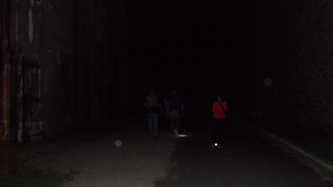

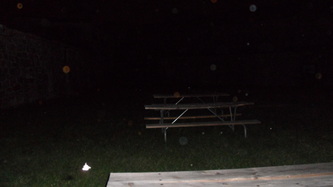
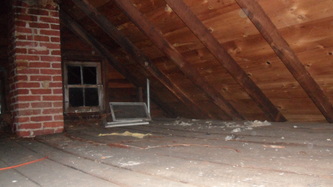
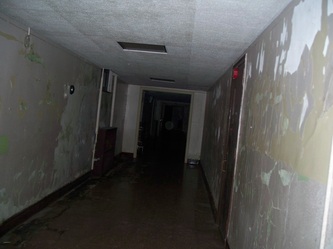
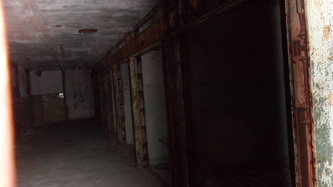

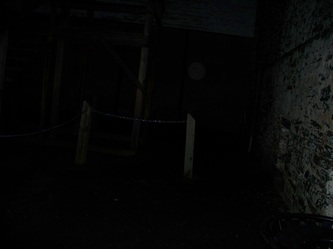

Dust Orb’s
WHY VIDEOS OF “ORBS” APPEAR AND DISAPPEAR OR CHANGE DIRECTIONS: Someone asked the question about video evidence and why orbs appear out of nowhere and disappear and how they change directions on their own. So, I created another diagram to explain just that. No, it’s not supernatural. It too has a very simple explanation.
The particles and artifacts in the air (including insects) are illuminated b…y the IR in the night shot mode of cameras, a typical setting for most nighttime investigations. The closer to the center of the IR light beam (D), the brighter the object will be illuminated and the further out away from the beam of IR (B), the less bright it will appear. You can actually see the brightness change in most cameras. You will notice right in the center, the screen is much brighter, and the outer edges of the video are often darker.
Much like a regular camera, there is also a focal point on camcorders. Anything behind the focal point (E) will not be able to focus or become clear. Since most particles are too small, they will rarely ever get picked up on camera, however, the larger particles will be illuminated and picked up by the IR.
So, what about the “orbs” that appear and disappear in the middle of a video? This happens when a particle is traveling outside the focal point where it is too small to be seen by the camera and travels behind the focal point and/or eventually getting illuminated by the IR. Larger objects, like insects, can be picked up by the IR outside of the focal point, so it is prudent to make sure that you understand that not all orbs’ videos are dust or other airborne particles. Once the object moves past either the focal point, or the illumination of the IR, it will disappear.
A particle that changes directions typically hits the path of a new air current (F). In the example below, I use an open window, but just about anything can change the air current…from a fan, heater or air conditioning vent kicking on, to even someone just walking or opening a door can change the flow of air in certain areas. If a particle is moving one direction and hits the new flow of air, it will change course and move in the direction of the air current it came upon.
Most videos of “light anomalies” or “orbs” are simply dust particles being captured by the IR illumination in the camera.
IN THE PHOTO:
A: The view area of the camera
B: The outer reaches of the IR light. Typically, minimal to no reflection will be seen in this area.
C: Mid-range of the IR light, moderate reflection and illumination can be seen in here, and most objects become visible.
D: The main area of the IR light. Particles appear bright and luminescent, the closer to the camera the object is.
E: The area behind the focal point, where no objects will be able to focus.
F: Example of air current that would change the direction of an airborne particle.
G: standard flow of air current. It would move in a constant direction until coming into another air current or hitting an object
H: The location in which MOST particles are illuminated by the cameras IR. Since the particles are various sizes, this is why only a select few particles are seen on camera.
RED DOTS – represent airborne particles. You will notice they are many sizes…but also, they come in many shapes too.
Author & Illustration: Paranormal & Supernatural Claims Review

Many objects/surfaces in the Paranormal environment can cause a shadow anomaly as we all have probably seen one time or another. The most important debunking tool you can use, is for the photographer to pay close attention to nearby reflective wall services, windows, mirrors, infrared illuminators as well as other cameras going off and a finger over the lense to name a few. To make it even more complicated, you have to think about if there were any outdoor objects like street lights, store front lights, people walking down sidewalks, car headlights reflecting off objects and the list goes on, just be creative and you will be surprised how easy these shadows can be debunked.

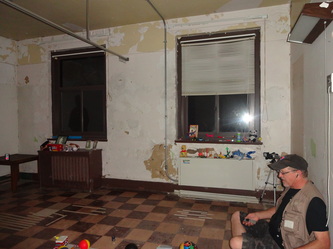
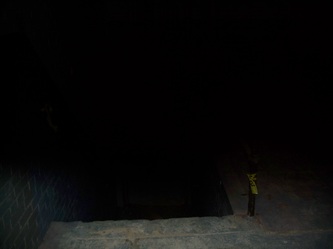
MIST/VAPOR
Mostly captured outdoors with flash photography. These can easily be contributed to weather conditions and human/animal breathing. These images are easily replicated when witnessed in real time.
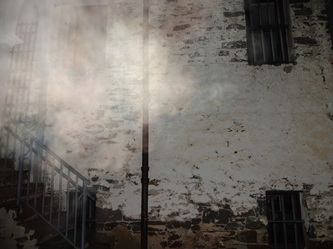

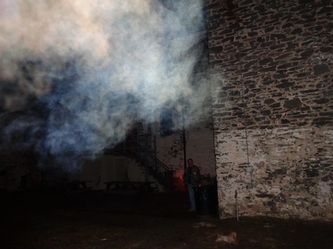
uNDERSTANDING tHERMAL iMAGING
By far the most sought-after piece of equipment in today’s paranormal groups equipment box would be the Thermal Imaging Camera or FLIR. But in reality, the thermal imager can be a common cause of false evidence presented to a client if the user does not understand the capabilities of this device. Even though the FLIR does have its limitations within the paranormal community, it can also be a valuable tool as well. Let’s start by understanding what FLIR stands for.Forward Looking Infrared (FLIR) devices us lenses and sensors to convert an objects infrared radiation to form an image. Any solid object giving off a heat (radiation) signature will be converted into an image. With this in mind, understand that nonsolid objects such as smoke, mist, vapors etc., cannot be captured by a FLIR device. This is why the FLIR is used by the fire department, because it can see through smoke it can help locate people trapped or in need of help as well as to locate hot spots within a structure. As you can see, the FLIR has its limitations in the paranormal investigation because we are often looking for non-solid objects. Knowing this information is only half the battle, because one very important (and a negative in our world) aspect of a FLIR is its ability to capture images from reflective surfaces. This is often where false evidence is generated but this can be overcome by the user being cognizant of his/her surroundings and being on the lookout for objects such as windows, glass doors, furniture, metal objects, pictures etc., you get the idea. In no way are we saying that all evidence captured by a thermal camera is a false positive because we really don’t know for sure what an apparition is made of, and we don’t know the effects an apparition can have on a solid object. One would think if an apparition were to be colder than the ambient air (hence cold spots), then an object manipulated by an apparition would have a direct temperature change. At that time this solid object would show a heat signature change and could be considered a viable piece of evidence. In return the FLIR can be a very valuable tool in helping to debunk many claims of paranormal activity. The FLIR can be used to find small critters that can often be confused as unseen movements. It’s a great tool to locate where cold drafts are entering an establishment that can often be referred to as a cold spot. Sometimes you can help a client by noticing over heating light ballasts, light switches and sockets that can be a cause of future electrical issues.As you can see the FLIR can be a valuable tool if in the hands of a properly educated user. Is it the Holy Grail of the paranormal world, probably not, but it is another useful tool an investigator can use to collect good field data. Keep in mind, because of the sensitivity of a FLIR device it’s best to allow at least 45 minutes to pass before entering a room once acquired by another investigator, to assure object temperature regulation.

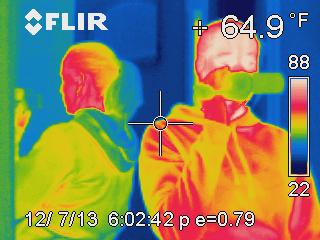
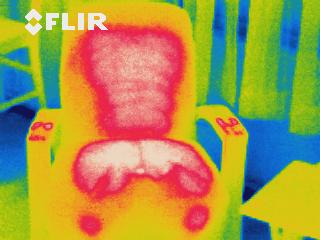
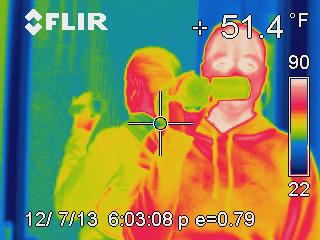

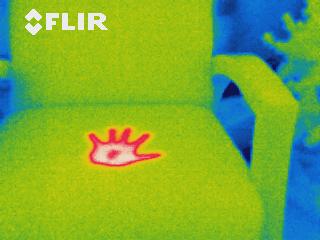
The Eye and Low Light
As paranormal investigators most of our work is done in low light to almost dark conditions. How many times have we thought we’ve seen something out of the corner of our eyes, a dark spot, or even a shadow person moving in the darkness, and just as your eye tries to focus on the object it disappears or moved? After years of investigating and encountering such phenomena, I have a feeling this is a very common anomaly often encountered during an investigation. While many of these anomalies may not be easily understood, some on the other hand can be actually contributed to the anatomy and physiology of the human eye in low light to dark conditions.
While being an RN in the Operating room, I focused many years of my career within the ophthalmology department. Spending many years talking with surgeons and getting to know the anatomy and physiology of the eye, I was starting to better understand which most don’t know about the eye and how complicated the eye actually is. In this article I’m going to explain how the eye processes low light and how your eye in these conditions can actually play tricks on what you are seeing.
Unlike nocturnal animals we don’t possess the special membrane called the tapetum licidum, which allows the low light input to bounce back towards the light receptors to enhance their night vision. In humans we do not possess this membrane so once light enters the eye and is absorbed once, the eye is forced to form objects within this single receptor realm. The light receptors of the eye are called rods and cones and are located on the retina. While both rods and cones absorb light, the rods are most active at night or low light conditions, and this has to do with the speed in which a chemical called Rhodopsin is transformed as light is absorbed. The bad part about Rhodopsin is that it can take up to 30 minutes to regenerate before the rod is back to its full light uptake capabilities.
Most rods are located in the peripheral of the retina and cones are located towards the center of the eye, these cones are more sensitive to bright lights and allow for fast Rhodopsin absorption, so in low light conditions they are unable to process the low light input because of the rapid re-absorption of Rhodopsin. Rods on the other hand out number cones but the image they are able to produce is within the grey to black scale and of poor quality. Keep in mind also that in the center of the retina (Fovea Centralis) there are no rods or cones so essentially there is a blind spot, that we cannot see in normal light conditions but come into effect in low light because it’s surrounded by cones, which do not function in low light conditions.
If you’ve been following along during the Anatomy and Physiology lesson, you might be starting to see a correlation between the eyes low light reception capabilities and false shadowing. Let’s see if we can bring everything together in a real-life scenario, we are all too familiar with. As investigators we are often in low light situations where we often use our periphery to locate objects in the dark. As we see an object in the dark it’s tough to make out what it is we are actually seeing because as we all now know, rods form a poor image, and produce an image in the grey to black scale. But as we try to focus on the object by using the center of our retina, we encounter a virtual blind spot (lack of rods as we discussed), which can give us the appearance as though the object has moved or disappeared. When in reality the object could still be there, but your eye is now playing tricks on you. This anomaly will continue unless an extra light source is added into the equation.
But, by far the most common explanations for seeing and misinterpreting low light anomalies is called matrixing. Matrixing is when the brain misinterprets what you are actually seeing and converts the poor-quality shape into a recognizable image. We must understand the brain is a very sophisticated organ and is excellent at identifying common shapes and patterns, especially when it comes to faces and human forms. This pattern recognition is called pareidolia and is often associated with peripheral vision, because of the poor image quality associated with the rods.
Keep in mind that legitimate shadows, dark spots do occur as we have all seen during an investigation. But as paranormal investigators we should thrive on providing legitimate findings to our clients even if this means we have to sometimes acknowledge what we might be seeing could be contributed to the natural eyes ability to perceive low light.
Matthew Kreager